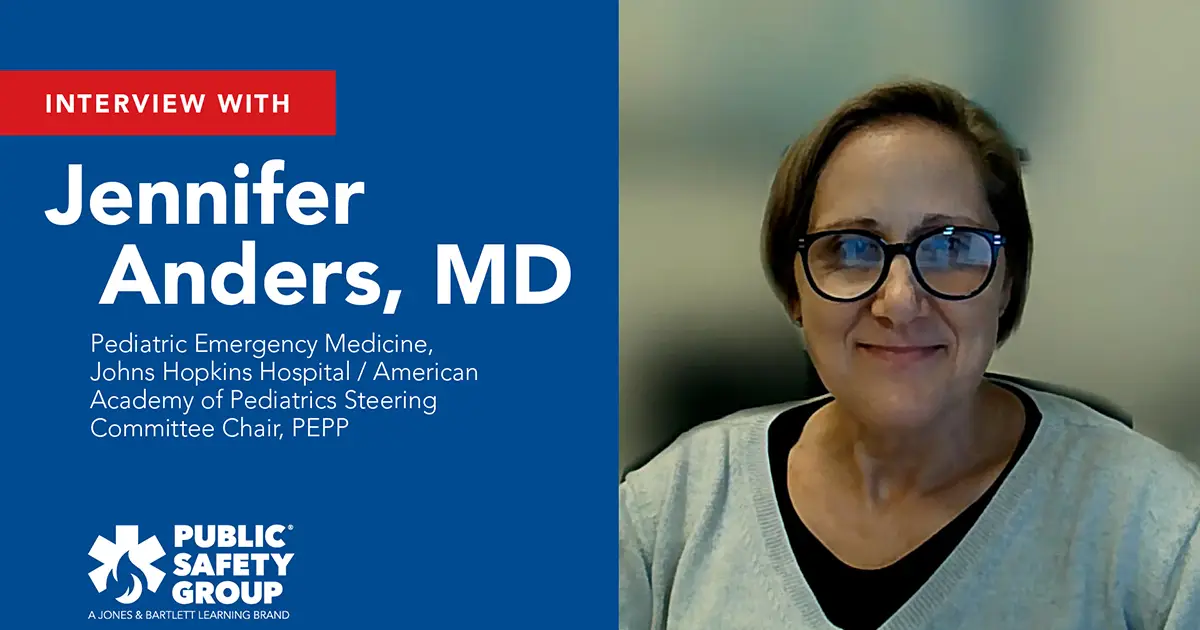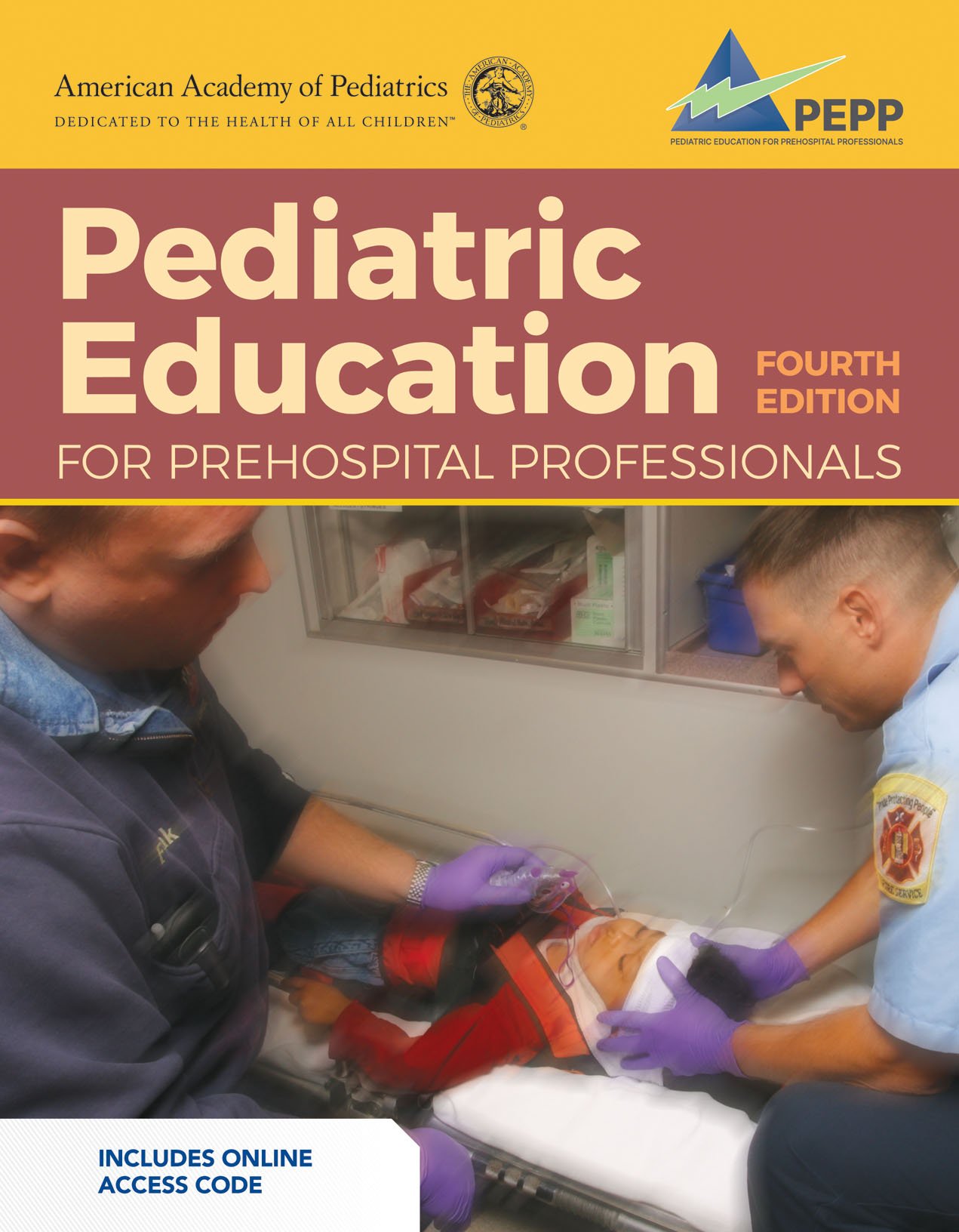Creating Realistic Pediatric Emergency Simulations: Best Practices for EMS Training

Pediatric emergency simulations play a crucial role in EMS training. The unique challenges of treating children require specialized knowledge and skills. Additionally, EMTs and paramedics report having increased anxiety when it comes to responding to a call involving children, underscoring the need for good training.
This is why Public Safety Group interviewed Dr. Jennifer Anders on how to conduct effective pediatric emergency simulations. Anders practices pediatric emergency medicine at Johns Hopkins Hospital, and is the Pediatric Education for Prehospital Professionals (PEPP) steering committee chair for the American Academy of Pediatrics, which released the renowned fourth edition of Pediatric Education for Prehospital Professionals program published by Public Safety Group.
Watch the interview:
At a recent ACCREDITCON conference, Anders led a simulation as part of one of the all-day PEPP preconference workshops. The chaotic, frenzied nature of the simulation was fascinating to observe and about as close to reality as one could hope to achieve.
Anders told us, above all else, that is what a trainer should aim for.
“What’s important is making it feel as real as possible,” she says.
Anders says sometimes making a simulation feel real necessitates state-of-the-art tech, such as a high-fidelity manikin that moves and makes sounds. But often, it’s less about the props and more about the situation itself.
“You have to make the decision making and mental work feel as real and palpable as a real-life episode,” she says.
In her simulations, Anders accomplishes this by playing the role of a distraught parent, shouting incoherent or unuseful information at the EMS students who need to keep their cool and get the parents to cooperate.
She says in one scenario, EMTs are responding to a child with a blocked airway, and the parent, trying to be helpful, may provide the child’s up-to-date vaccination records.
“I want students to know very specifically, could the patient have choked on something, what was the patient doing immediately before,” she says. “The parent could start going on about the immunizations the patient had three weeks ago or what he had for lunch on Tuesday.”
The teaching moment for providing EMTs and paramedics here is to try to get them to ask the right questions of parents and caregivers. When they don’t, Anders will deliberately take them off script to get them to refocus.
“Chaos is part of real-life prehospital medicine, isn’t it?” she says. “I try to bring as much of that into a simulation scenario as I can.”
Embracing the Discomfort Associated with Pediatric Calls
Anders says obviously everyone in a simulation knows it is fake, which takes some of the pressure off. But what makes care in pediatric emergency medicine challenging is everyone’s baseline discomfort level.
It’s important to embrace that discomfort and use it in the training session.
“I try to bring the learners around to that place where their blood pressure is going up even though we can all see there’s a plastic doll sitting on the table,” Anders says.
She says she adds in the parental anxiety, which is a major component of real-world pediatric medicine. But this also brings a bit of levity and humor into the simulations.
Though it seems a little counterintuitive, EMS students can use that, Anders says.
“This can help them hone the questions they ask and sometimes relaxes everybody and gets them into the realism of the situation,” she says.
Measuring Success of a Pediatric Emergency Care Simulation
Anders says she starts with a few learning objectives for students during a simulation. Each case is a little different, so she advises building a solid plan going into a simulation, but remembering that individual learners may completely derail the scenario as it’s playing out.
“You may take a turn because the learners may make a decision you didn’t anticipate,” she says.
The debrief is actually the most important component of a stressful session, Anders says. In her simulations, she lets learners give their feedback, but she is going to turn the conversation back to the original learning objectives of the particular case.
Ultimately, the high-level goal is to get students to feel a little more confident in the field.
“I want them to feel, ‘Oh yeah, I’ve been here before,’” she says. “I want them to develop a bit of muscle memory, so they’ll know what to do if they find themselves in this particular kind of jam in the future.”
Pediatric Education for Prehospital Professionals (PEPP), Fourth Edition
Developed by the American Academy of Pediatrics (AAP), the fourth edition of PEPP paired physicians and EMS professionals together to ensure the content is medically accurate, shares current best practices, and reflects the realities of the field.
Request Sample ContentRelated Content:
- A Guide to Pediatric Pain Management for Emergency Responders
- As Drowning Deaths Increase in Young Children, First Responder Training Takes on Added Importance
- Training Officer: Great Pediatric Prehospital Training Instills Confidence in First Responders
- Maximizing Efficiency: Pediatric Training for Programs with Overloaded Curriculums
